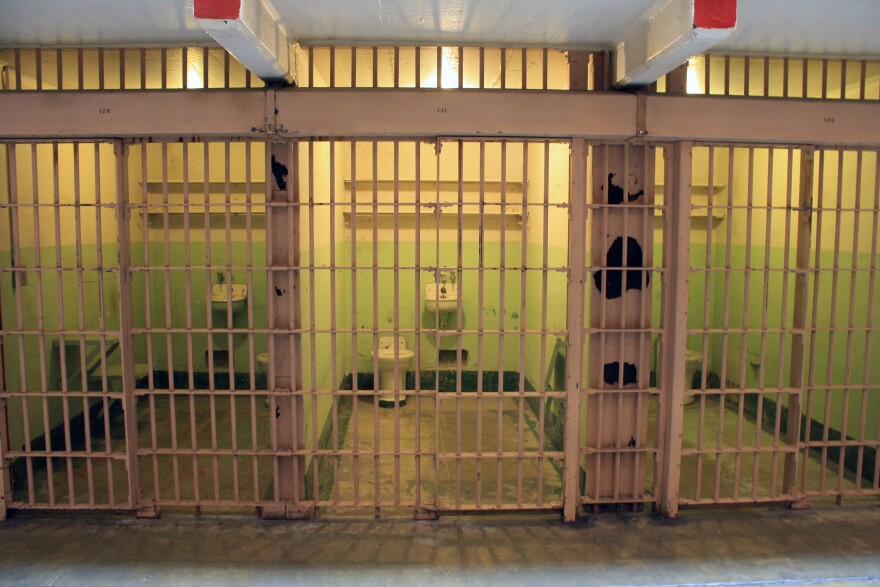The U.S. Department of Education recently released its annual Civil Rights Data Collection. And for the first time it includes information about the days and hours of educational programs at juvenile justice facilities.
Though confined youth are entitled to an education by law, the quality of education they receive can vary greatly. According to The Atlantic, the education of incarcerated youth is mostly ignored and poorly understood.
Zachary Malter is a policy research assistant for the American Youth Policy Forum, and a former high school teacher. Here are five things Malter writes he wishes he'd known about juvenile justice and its relationship to his students with juvenile justice experience:
1. Many schools in juvenile detention facilities lack basic instruction and educational services, making students’ transition out that much harder.
…Many classes in facilities lack basic instruction. Instead, students are given crossword puzzles or textbooks to complete on their own while an adult sits at the front of room. As a result, students in facilities are more likely to fall behind, making their pre-existing educational gaps that much greater. If students return to a traditional school after leaving a facility (66% don’t, and of those who do, many enter alternative schools), they need teachers who can devote extra attention towards catching them up, filling in gaps in their knowledge, and helping them see the value of schooling.
2. Educational records and credits often do not transfer quickly between a juvenile detention facility and a home school. Therefore, students with previous juvenile justice experience might be enrolled in classes that they are not prepared for or that they have already taken.
A student who has been incarcerated may fall behind academically without the home school being informed. As a result, the student may be placed into classes that are too advanced. Alternatively, if records never transfer, credits awarded in facilities may not be counted—and students may be forced to attend classes that they have already passed with students who are younger and with content that is too easy. Further, the time a student spends in a facility may not align with the school calendar, decreasing the likelihood that a student will obtain academic credit in the facility. As a teacher, it is important to recognize the frustration these students may experience, and to personalize the instruction, whenever possible, to meet their needs.
3. Youth with juvenile justice system experience often have many mandatory meetings and responsibilities, making it harder for them to complete homework.
These commitments (probationary meetings, community service, counseling) are especially substantial for the roughly 50% of young people with juvenile justice involvement who have concurrent child welfare involvement. Regardless of the merit of these required meetings, they take up a significant amount of time, which detracts from these students’ ability to do homework (let alone work or participate in extracurricular activities). Teachers need to be realistic when they assign homework, given these outside demands, without unduly sacrificing the rigor of their coursework.
4. Young people with juvenile justice experience will face challenges in accessing postsecondary education and applying for jobs.
Recently there has been a movement supported by the U.S. Department of Education toward ending this practice or “banning the box.” However, in most places, young people will still face this obstacle. Teachers should be better informed about this issue so they can guide their students in pursuing the sealing or expungement of their court records and in applying for jobs or further educational opportunities which do not require that they reveal their juvenile history.
5. There are many programs to support young people with juvenile justice system experience.
There are numerous state and local programs helping young people who are re-entering with challenges such as navigating education and employment, dealing with criminal records, and gaining access to housing and wrap-around services. Since there is a shortage of counselors in many schools, a teacher could be the ideal person to refer a student to a supportive youth program.
According to the U.S. education department, on any given day, more than 60,000 youth under 21 are confined to juvenile justice facilities throughout the country. It's estimated that less than 20 percent have obtained their GED or high school diploma.
Education is the pathway to participation in the economy and society for these young people, so it only makes sense to make it a priority.
David Domenici is director of the Center for Educational Excellence in Alternative Settings, a non-profit devoted to improving teaching and learning at juvenile-justice schools. Domenici told The Atlantic:
…Schools in juvenile-justice facilities need to be held accountable, and the people in the schools and the institutions that run them need to be held accountable—by local school districts, state offices of education, the federal government, and by all of us. Schools need to agree to basic performance measures—and if they fail to meet the measures then something real has to happen. That could be a reconstitution, a reorganization, a change in provider—but it’s got to be something.




